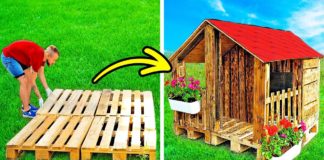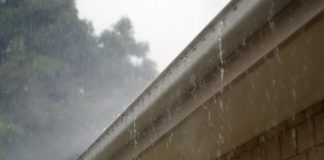
Wallpaper seems to go in and out of fashion, which inevitably affects the availability of materials. But if you shop around, you will find that wallpaper is manufactured in a huge range of designs and types. Find out what is available in your area, and then, if you are going to be wallpapering the kitchen, make sure it’s going to be suitable for this purpose
The kitchen is a hardworking part of the home which means that all surfaces need to be chosen carefully. Generally walls need to be easily scrubbed, especially areas around cookers and stoves, and around sinks. One way around this is to tile portions of the wall and then wallpaper the rest.
Wallpaper suitable for kitchens
Always remember that the cheaper the wallpaper, the more lightweight it will be, and the more likely it is to stretch and tear when you hang it. Also, a lightweight paper will not be suitable for scrubbing. Coated papers may be wiped, but it’s not a good idea to scrub them. Without a doubt, the most suitable wallpaper for kitchens is the vinyl type, because you can scrub them clean.
Broadly speaking there are two types of vinyl wallpaper, plain and textured. Some come ready pasted, which means you should be able to simply wet the backing for a short while and then hang it. In reality, it will stick better, and be a lot easier to hang, if you use a paste as well.
Textured vinyl wallpaper undergoes various heat treatments when it is manufactured, which is how they produce various relief patterns. This makes it particular suitable for kitchens and bathrooms where condensation occurs and can be a problem, because the vinyl creates a good water-resistant surface. Because if its thickness, vinyl is also easier to hang than most other types.
Tools and materials for wallpapering the kitchen
First you need suitable wallpaper that you like, and enough of it. The number of drops you will get out of a roll of wallpaper depends on two things:
- the length of the roll, and
- the height of your walls.
So start off by measuring the height of the walls to be papered, from the cornice to skirting or floor. Then measure the total distance around the kitchen, including doorways and windows. If openings are wider than the width of the paper, you might be able to deduct part of the area from your final total, but it’s usually best not to take a chance. With these measurements you should be able to work out how many rolls you need. Just remember to take pattern repeats into account, and to make sure you can cut the drops slightly longer than required. If you don’t buy enough paper in the first place, and need to buy more, make sure you get any additional rolls from the same batch, because the colors might be fractionally different in another batch. And yes, it WILL show. The batch number will be printed on the packaging of each roll, so make a note of it.
Basic tools you will need include a sharp pair of scissors and a utility or trimming knife. You will also need a solid and stable surface wide enough for you to place the wallpaper drops on while you apply the paste. You can use a kitchen table for this, or buy a special pasting table. These are usually wooden and fold up for easy storage. Then you will need a bucket for the paste (unless you have bought the ready-mixed type) and a paint brush to apply the paste. The brush should be reasonably wide so that you can get the job done quickly. You will find that a 4 in or 100 mm brush is ideal. If you buy a ready-pasted paper, and aren’t going to take the advice of using additional paste, then you will need a water trough of some kind to dip the paper into before you hang it.
You can buy special smoothing brushes to smooth the paper once it is on the wall, but a large foam sponge works just as well. However one specialist tool that is great to have is a seam roller that you use to press the joints between the drops to make sure they don’t lift.
It is absolutely vital that wallpaper is hung vertically, so you will need either or plumbline or a spirit level to mark the first vertical line on each wall. And of course you need a tape measure, ideally one that is retractable, to be able to measure your kitchen in the first place, and to measure the drops.
Hanging the wallpaper in your kitchen
One of the reasons relatively few people tackle projects like wallpapering the kitchen themselves is that they believe it is a difficult job that should be left to the professionals. But anyone with some DIY savvy will find that it isn’t difficult at all.
The first step is to make sure that your walls are well prepared. Wallpaper is not a solution for covering up blemishes and dirty surfaces. Scrub your kitchen walls and scrape away any peeling paint.
Sandpaper any uneven edges and fill in holes and cracks using a proprietary crack filler. If the walls are currently painted with shiny enamel paint, rub the painted surface down with a coarse sandpaper to help the paste key the wall.
The next question is where to start. If you are using a bold pattern, then it is usually best to start in the centre of the most prominent wall, for example the wall behind a fireplace or the wall you see when you enter the room. The only disadvantage is that you are likely to have to trim drops vertically when you get to both corners of the room. Otherwise start at the corner of the room opposite the main entrance to the kitchen.
You then need to draw a vertical line where you are going to hang your first drop. Don’t be tempted to use a corner as your guide because these are often not vertical at all – you might be surprised.
Paint the paste onto the paper, folding each end over itself. The paste will need a little time to soak in, but don’t let it dry. Follow the manufacturer’s guidelines. Then carefully step up the ladder, holding the part of the paper that will be closest to the ceiling. Position the paper so that the top edge is slightly higher than the cornice, and press it firmly against the wall. Then slide it so it is in line with the vertical line you have drawn. Use a sponge or smoothing brush to make sure every inch of the paper sticks to the wall without any bubbles. Work from the top down and from the middle outwards.
Then trim the top along the edge of the cornice, either with a utility knife or by marking the paper with the back of your scissors and then peeling back slightly and cutting with the scissors. Repeat the process for each consecutive drop, making sure that any pattern matches the pattern on the drop next to it.
When you get to door and window openings, align the drop with the previous one and let it flap over the opening. Smooth the paper and then cut off the excess. If the opening is wider than the wallpaper, you may be able to use an offcut at the top of the opening – provided the pattern (if there is one) matches.
It might take a little practice, but a kitchen wallpaper project will give you a great deal of satisfaction at the end of the day.








































